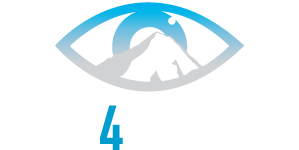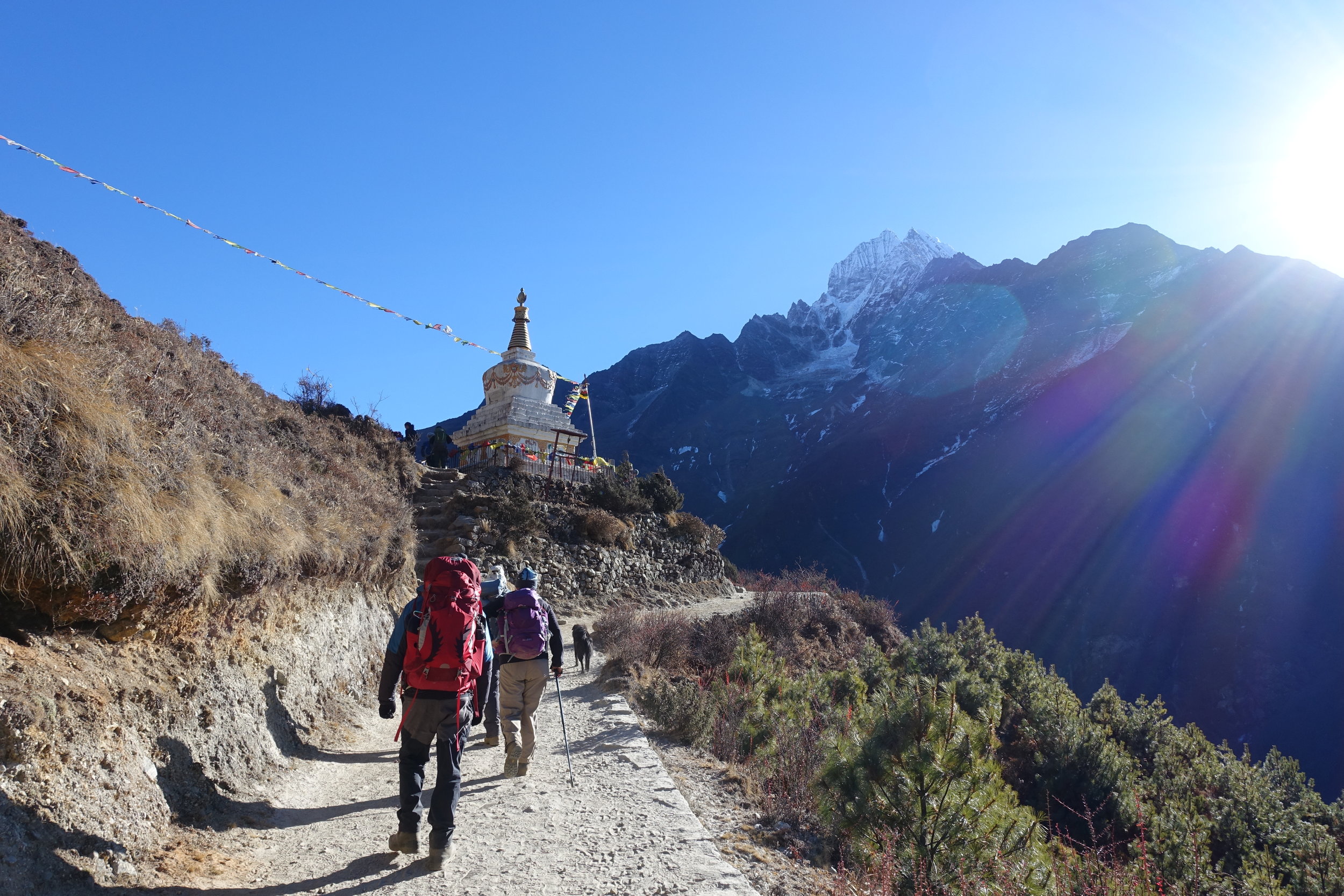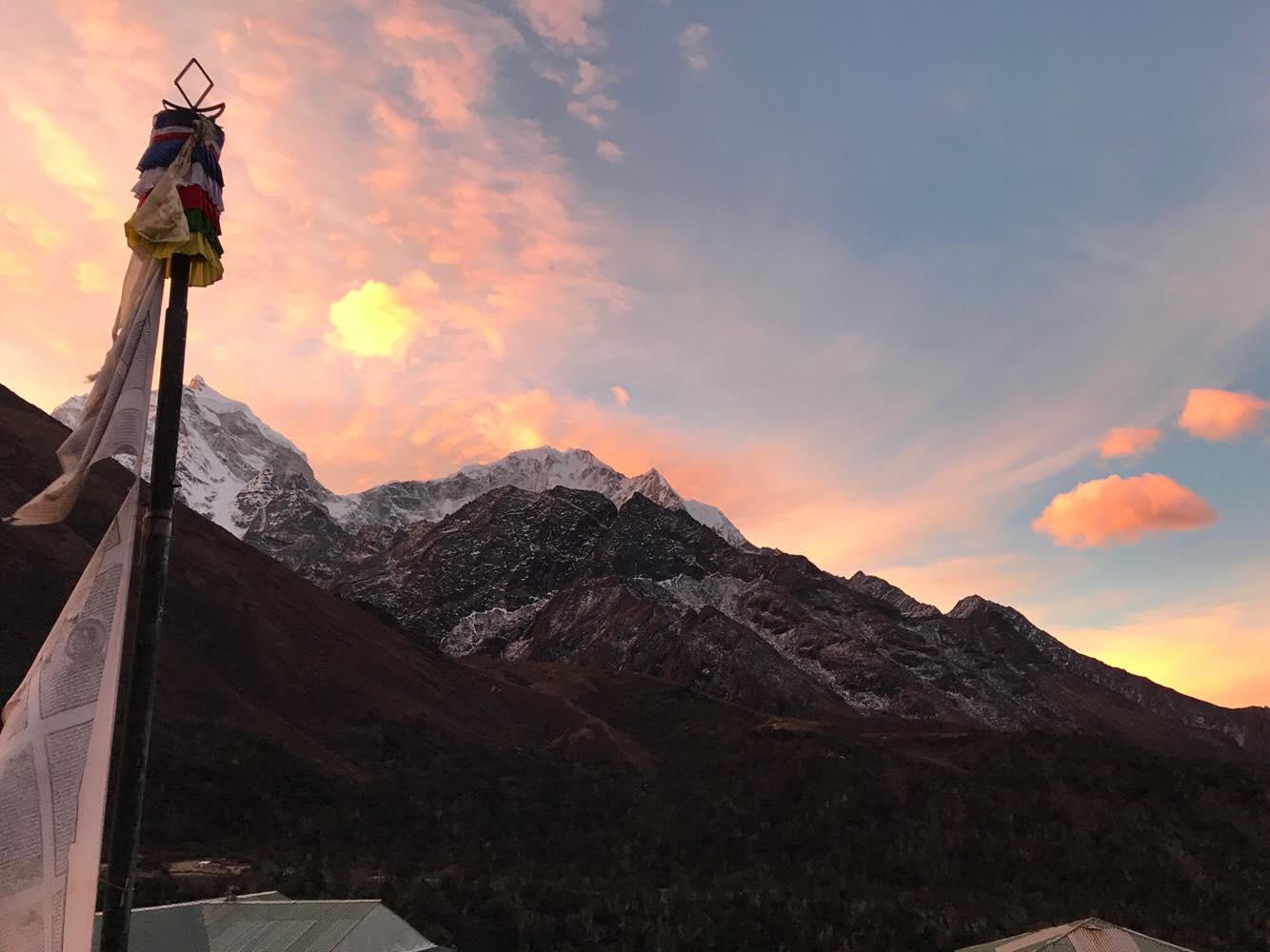Written by Celine Z.
My name is Celine and I’ve just come on board as a new committee member for Eyes4Everest. I graduated from UNSW Optometry in 2017 and now work in a Sydney private practice. I knew of Eyes4Everest from my university days. Shaun Chang and Carina Trinh were instrumental in letting my colleagues and I know about the Eyes4Everest mission and I’ve been interested in getting involved ever since.
In December 2017, I trekked to Everest Base Camp as a post-graduation trip. I did not undertake any eyecare on this trip as I wasn’t yet qualified. Coincidentally, Eye4Everest needed a large amount of spectacle frames delivered to Nepal during that time so I packed them away in my duffle bag en-route to Kathmandu. I had never undertaken a trek before but life is full of surprises.
I researched countless books, videos, blogs and articles before heading off to Base Camp. Note: I had never trekked before this. Longest hike I'd ever done was maybe 11 hours...
Here are some things that surprised me about the trek:
1. You don’t have to be a mountaineer; slower is better at altitude!
Slowly, slowly. If you go too fast you'll miss the scenery that surrounds you.
“Bistari, bistari”, the Sherpa mantra ‘slowly, slowly’, will be words you become familiar with. Look around you, you’re in one of the most beautiful landscapes in the world. It is not a race to the top. In fact, if one ascends altitude too quickly, they are more susceptible to altitude sickness.
On hiking days, the trail is about 4-6 hours of walking per day through gentle dips and valleys. There will of course, be a couple of more strenuous sections (Namche Hill or Kala Patthar, anyone?), but take your time. A good attitude and a moderate level of fitness will be more than enough to complete the trek.
2. Mt. Everest isn’t the only mountain that will leave you in awe
You turn a corner in the trail and you are greeted by the view of Mt.Everest, the most widely talked about mountain in the world. Here it sits nested between 4 other peaks, all above 6,000m in altitude. Everest, although stunning, ironically looks the smallest at this angle. Ama Dablam (meaning mother’s necklace), is pure beauty and becomes a constant in the icy skyline. Take the time to acquaint yourself with the other beautiful mountains on the trek.
Fun fact: You cannot see Mount Everest from Everest Base Camp. You’ll have plenty of views and photo-worthy glimpses of Mt. Everest in the earlier parts of the trail, though.
At Everest Base Camp. Not a glimpse of Everest in sight. To the left is the infamous Khumbu Icefall.
3. Hidden luxuries of home aren’t hard to come by on the trail
You’re not going off the grid. You’ll still be in civilization but as my dear trekking friend, Wendy, likes to say, “just not tier 1 civilisation”. Lodgings along the trek all have warm dining areas powered by yak dung, and pillows and blankets aren’t hard to come by! You can even get Wifi for a small charge in most places.
Apart from the ubiquitous traditional Nepalese meal of Dal Bhat, there are more familiar options on offer to fuel you on the trek.
The teahouses on the trail specifically cater for tourists with some ‘delicacies’ . Hot Lemon (hot water and lemon Tang) is amazing after a cold walk. Or how about a Mars Roll (a Mars Bar wrapped in pastry and deep fried)? You will soon find your favourites. Snickers chocolate bars are almost like bars of gold, with prices going up to $5USD for a bar. Essentials like toilet paper will get more expensive the higher you go so make sure to take enough.
Nepalese Rupees are the preferred currency on the trail, so make sure you stock up before you go! They don’t accept PayPass on the mountain 😉
4. Buzz, crack, roar, grunt– what are those sounds?
In my mind, I thought the trip would one full of silence in the remoteness of the Himalayas. This couldn’t be further from the truth. You’ll pass incredible landscapes and suspension bridges, the wind will be howling through your ears and you’ll hear the rush of the forceful Khumbu river passes below you. The mechanical whirring of helicopters in the crisp air is common – some are to rescue helicopters bringing down sick trekkers, some are scenic flights. The ‘ding, ding, ding’ of a herd of hairy Yaks passing by is a common sound. Tip: stay snug to the moutainside so you don’t get pushed off. On the trail, there are many distinctive accents you’ll recognize – Aussie, Kiwi, Americans, British, Chinese, Thai and of course Nepali. The trail is abuzz with life and sounds.
Naks and Yaks crossing the trail. Note the human-folk sticking firmly to the mountainside to avoid being pushed off.
5. Photographer’s delight!
A sunset over the village of Pangboche, which happens to be our E4E Optometrist, Tashy Sherpa's, home.
Oh, there is so much to photograph on this trip. Beyond the mountains and cloud cover, there is so much colour and culture to behold. Prayer flags strung across the passes flutter in the wind, the wonders of the Milky Way and shooting stars paint the night sky, visible with your naked eye alone.
Don’t forget to duck outside when the sun sets to be greeted by a wonderous display of red and oranges painting the mountains.
6. The warm Nepalese hospitality is unforgettable
I came for the mountains but I remember the people of the Solukhumbu region the most. No matter where you walk, you will be greeted with a friendly “namaste”, whether it be from small rosy-cheeked children or an elderly grandmother who is out selling her wares. They are truly some of the most resilient and genuinely friendly people you will meet. On the mountain, it is difficult for locals access eyecare and proper healthcare. Access to the villages can only occur on foot, by yak/horse or through unaffordably expensive helicopter flights. It makes me so happy that Eyes4Everest is servicing this great need through their trips to the region.







